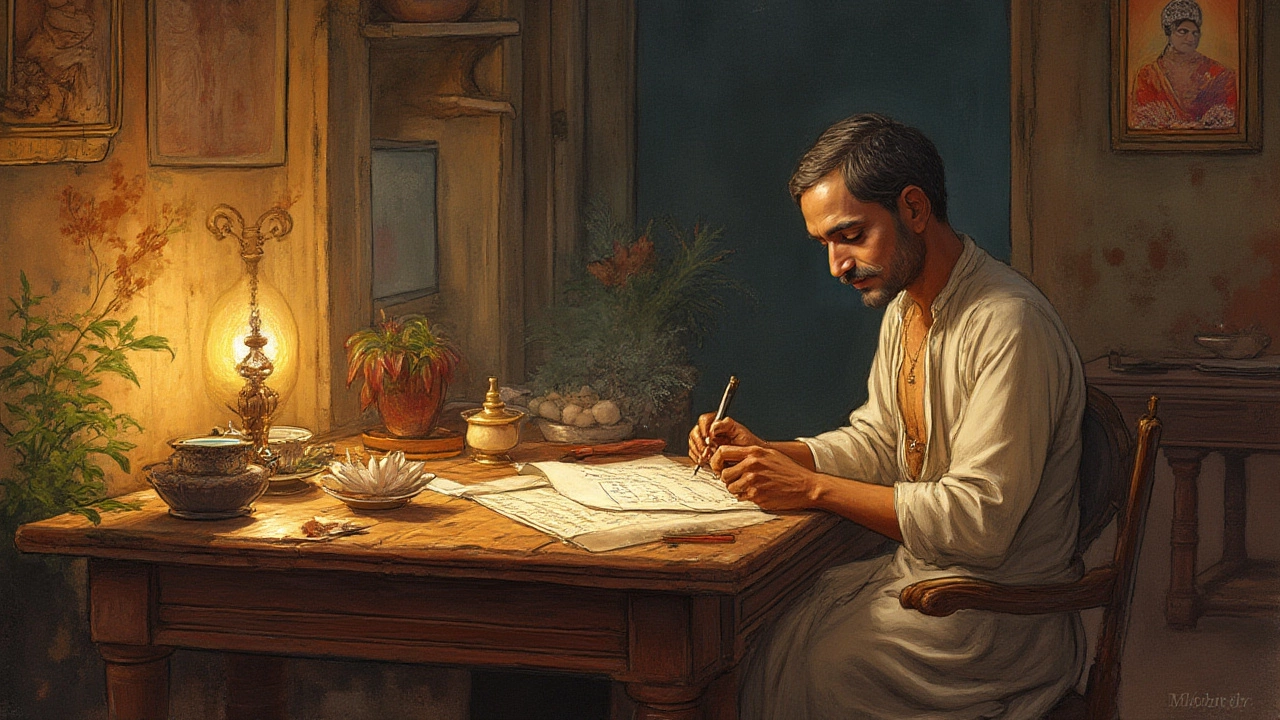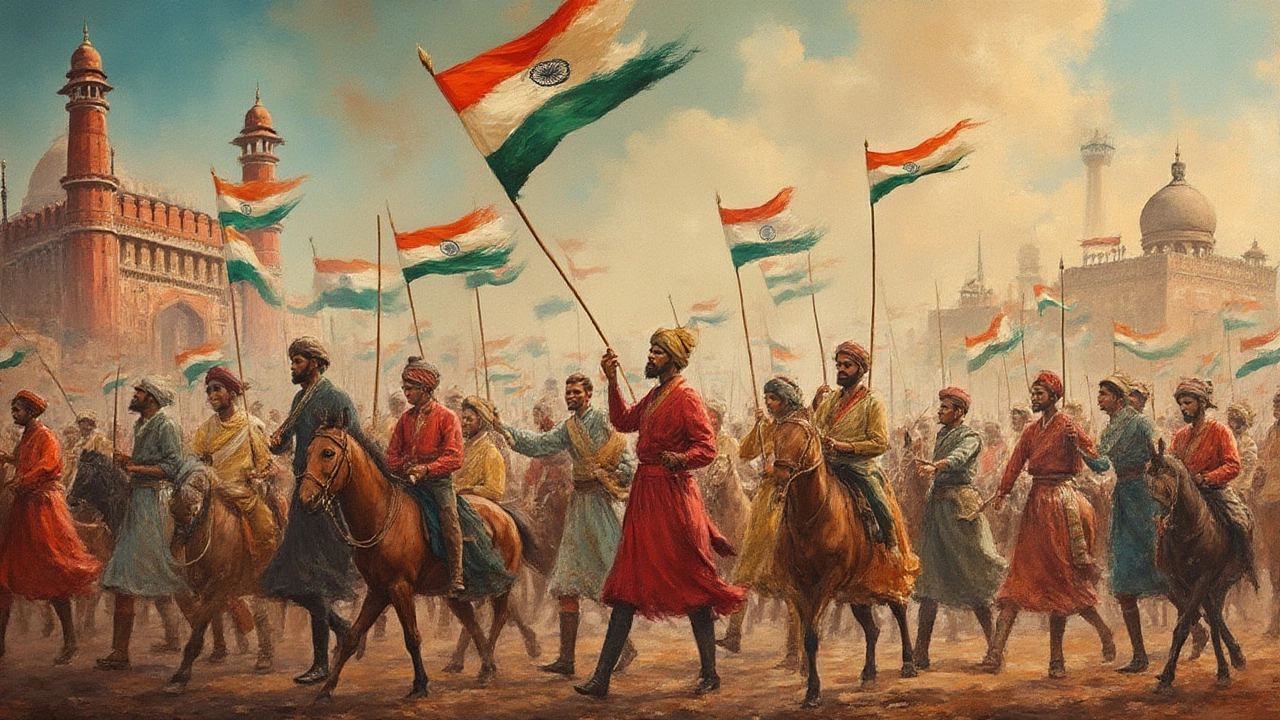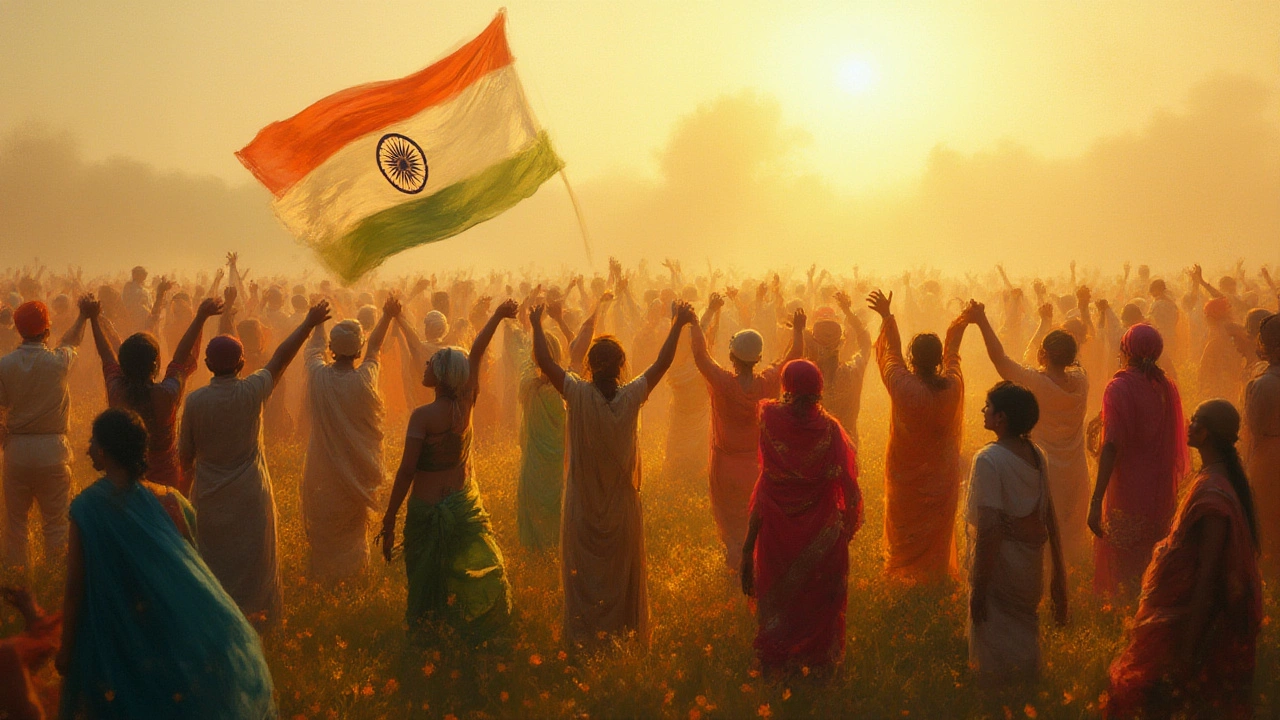It’s wild to think how just a few lines of poetry can stir up the emotions of an entire nation. But that’s exactly what happened with India’s original national song, a piece that shaped history, sparked protests, and still turns heads in schools, stadiums, and sometimes even on the street. Ask any Indian about national pride, and the chant of “Vande Mataram” usually tops the list—right up there with the anthem itself. But how did a Bengali poem become a war cry, and why does it still feel so powerful after more than a century?
How Vande Mataram Became India’s Pulse
Back in 1875, Bankim Chandra Chattopadhyay, a legendary Bengali writer, penned “Vande Mataram” in his novel ‘Anandamath.’ At that time, British rule was tightening its grip, and Indian identity was struggling to breathe. The phrase itself means “I bow to thee, Mother,” with the “Mother” symbolizing the motherland, not an actual person. This was a clever move—by turning the motherland into a kind of goddess, Bankim Chandra found a way to inspire a sense of devotion that went beyond politics or religion.
Interesting fact—this song wasn’t randomly picked. When India’s freedom movement started gaining steam in the late 19th and early 20th centuries, “Vande Mataram” became its unofficial soundtrack. Revolutionary groups would use it to fire up their squad, students would sing it during protests, and it consistently showed up in speeches and gatherings. Even the first time the Indian National Congress met in 1896, the song brought the entire assembly to its feet. Rabindranath Tagore—himself a Nobel Prize-winning poet—was the one to set it to tune for that meeting. If you’re wondering if a poem can really move crowds, this one actually did.
Many folks mix up the national anthem and national song. To set the record straight, “Jana Gana Mana” is India’s national anthem, while “Vande Mataram” is the original national song. Here’s something else—this wasn’t just about waving flags. In British India, singing “Vande Mataram” in public could get you arrested, kicked out of school, or even locked up. Despite that, it found a way to echo from every corner, from the dusty streets of Kolkata to remote villages where hope was hard to find.
| Fact | Details |
|---|---|
| Year Written | 1875 |
| First Sung At | Indian National Congress session, 1896 |
| Author | Bankim Chandra Chattopadhyay |
| Language | Sanskritized Bengali |
| Current Status | National Song of India |

The Meaning and Lyrics: Deeper Than a Simple Salute
If you only know the opening words, you’re missing the real juice. “Vande Mataram” is written in a sort of blend between Sanskrit and Bengali. It’s not a typical Bollywood number or even a patriotic film song. The lyrics create an image of the motherland—she’s described as lush, gentle, clad in green fields, flowing rivers, cool winds, and sweet language. There’s nothing aggressive or angry about it. Instead, it’s an ode. It’s emotional but not sappy.
The song had such a wide reach because its language is simple and direct. The first two stanzas, the part that got official recognition, praise the land, the rivers, and the bounty that makes India ‘Mother’ to millions. The poem gets a bit more intense later, as it connects the idea of the motherland to the goddess Durga—warrior, fierce, and never backing down. That metaphor turned the simple idea of loving your country into something almost spiritual, but Bankim didn’t flood it with religious references specific to any one community. This was about unity.
Here’s a tip if you ever try reading the full poem: pay attention to the way it talks about nature. It’s not accidental. In rural villages, these images made people feel like the song was about their actual home—the trees they climbed as kids, the rice paddies their parents worked. That’s why it stuck. Even now, Bollywood and independent musicians keep returning to this imagery, often mixing traditional and modern styles to keep “Vande Mataram” fresh for new audiences.
Why just listen to me? The government even made the first two stanzas of “Vande Mataram” the official national song when India became independent in 1947. If you check old footage from the independence day celebrations, you’ll hear the crowd singing it just as loudly as “Jana Gana Mana.”
- The song inspired titles of newspapers, plays, and even underground freedom fighters’ code words. That’s next-level influence.
- Every year—especially on Independence and Republic Day—schools and offices play this song alongside the anthem.
- It’s been translated into dozens of Indian languages, so people can sing it in their own mother tongue.

Controversies, Adaptations, and Its Place Today
No piece of art that’s been around for this long escapes controversy. Although “Vande Mataram” was designed as a symbol of unity, it sometimes sparked debate between groups. The mention of goddess Durga in the later stanzas made some people worry that the song might not include everyone. During debates in the 1940s, especially as India was trying to unite its wildly different communities, leaders like Jawaharlal Nehru worked out a careful plan. They declared only the first two verses as the official version for national events. These focus on the land and its beauty, not religious imagery. That compromise helped keep the song’s spirit alive without excluding anyone.
Since then, “Vande Mataram” has popped up everywhere—radio, TV, movie soundtracks, protest rallies, even cricket games. In 1997, the iconic singer A.R. Rahman released a wildly popular remix for 50 years of independence, making the song familiar to a younger crowd that loves pop music just as much as old-school poetry. Tributes to the song show up every year, from students performing it at school assemblies to flash mobs belting it out in malls.
Even with modern pop culture, “Vande Mataram” managed to stick to its roots. It never tried to be ‘cool’ in the usual sense, but it always shows up when Indians need something to bring them together. That’s not as common as you might think, given how big and diverse the country is. If you ask someone why it still hits home, they’ll probably talk about the sheer hope in those words—a vision of a country that’s strong, gentle, and worth sacrificing for. The fact that it survived British censorship—and is still sung today—shows just how deeply it runs in the Indian mindset.
For anyone interested in history or culture, knowing “Vande Mataram” goes way beyond just memorizing lyrics. It’s like a shortcut to understanding what fired up a movement that would eventually topple an empire. If you want to go further, check out performances by legends like Lata Mangeshkar or Rahman’s electrifying remix. These keep the original national song of India alive in a way that’s fresh, even in crowded cities where tradition sometimes gets drowned out by modern chaos. No matter what version you hear, the message doesn’t change: pride, unity, and a promise to protect the land that raised you.
